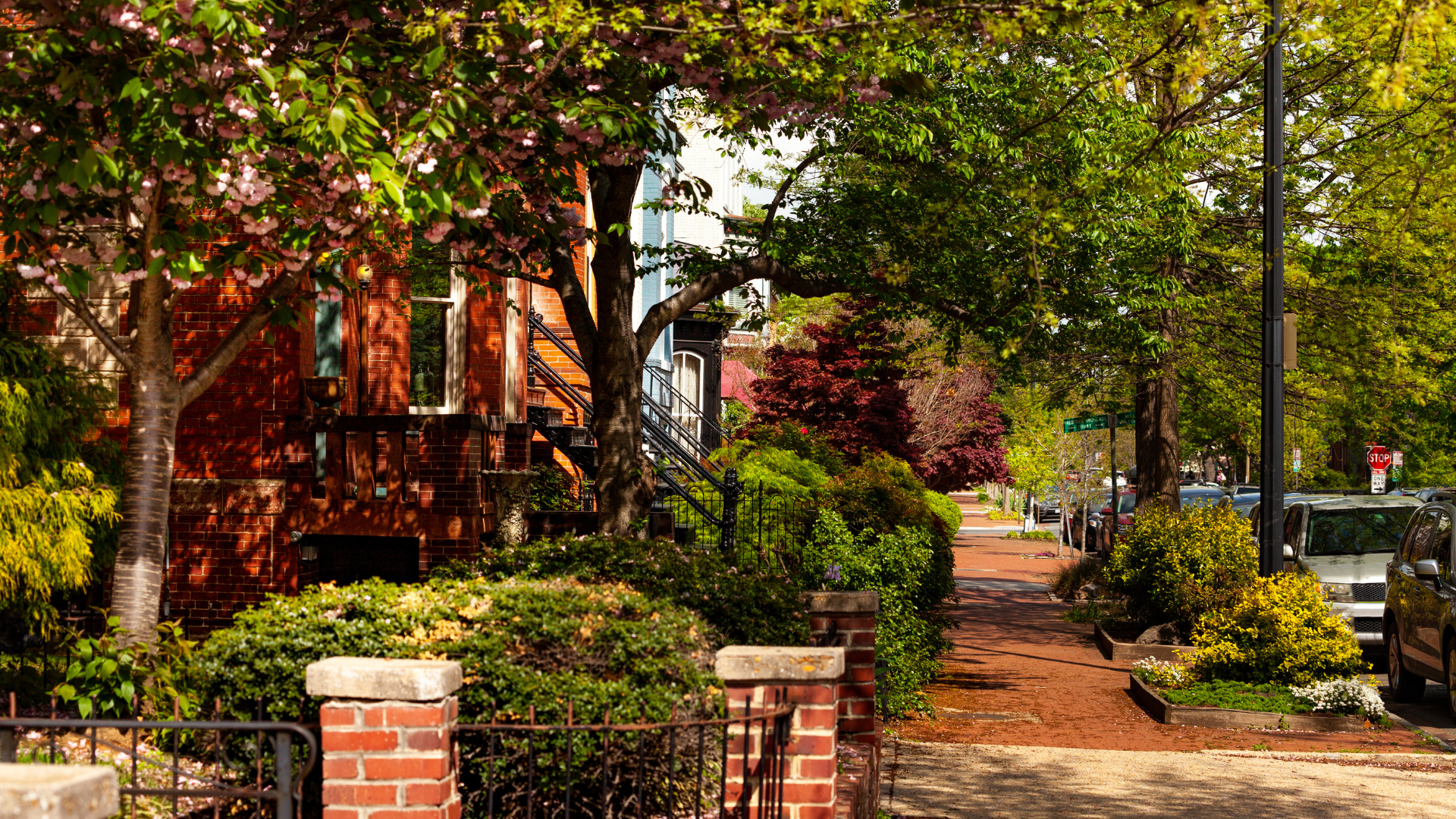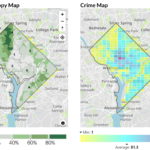THE LEAFLET

Mythbusting: The “Trees and Crime” Myth
Last week in our month-long mythbusting series, we debunked the “big tree” myth that makes some homeowners and residents reluctant to plant large canopy trees. We concluded that with proper planning and care, a large tree is actually the best choice for many homes throughout DC.
For our second installment, we look at the “trees and crime” myth. This is a kind of urban folklore that dense vegetation and tree foliage is a hiding place for criminals. People fear that trees, bushes, and other vegetation can obstruct views and sightlines that cover criminal activity. But, does tree cover indeed encourage crime?

DC’s tree canopy map and 2023 reported crime map. There is a strong correlation between areas of high tree canopy and lowered crime rates. Click to enlarge.
Recently, NBC4 Washington meteorologist and science teacher, Ryan Miller, spent a brief but compelling 3 minutes on-air to highlight the correlations between crime, heat, and lack of tree coverage in DC. Miller showed through GIS analysis that the east/southeast side of the city (Wards 5, 7, and 8) sees higher crime rates – even when controlling for population. These are also Wards that have some of the greatest gaps in tree canopy coverage and are seeing the greatest effects of the urban heat island effect.
So it would seem that the exact opposite is true. Trees and the canopy coverage they provide do not contribute to crime rates – instead, trees may actively decrease crime. But, will planting trees in your neighborhood really help curb crime? There is no definitive answer, but data shows this could be the case.
In 2001, a landmark study from the University of Illinois looked at crime rates in varying Chicago area neighborhoods. It was one of the first to compare aerial photos of vegetation with crimes reports. The researchers found that buildings surrounded by foliage saw 48 percent fewer property crimes, on average, and 56 percent fewer violent crimes than buildings with low levels of vegetation. Ever since, there has been a growing body of research that has strengthened the correlation between vegetation and tree canopy coverage, and lowered crime rates.
A more recent study of tree canopy and crime data in Baltimore found a strong relationship between high tree canopy percentages and low crime rates. But this study wasn’t simply saying what many people already know – that the tree-lined streets of wealthier neighborhoods see less crime. What was unique about the study is that it compared otherwise similar neighborhoods – same income level, housing stock, density, and demographics – and showed that the ones with more trees still had significantly lower crime rates. They found that just a 10% increase in tree canopy was associated with roughly a 12% decrease in crime.
Why might trees play a part in curbing crime? It’s hard to tell. It could be that trees have a calming effect on violence. Research shows that trees and green space in neighborhoods reduces stress and anxiety, encourages exercise, and generally makes people more civil. Or it could be that well-maintained trees beautify and bring order to a neighborhood, which reduces crime. This is the “broken windows theory” of criminology, which suggests that visible signs of crime (like broken windows) or disorder encourages criminal activity, as if to convey a message that no one cares about the neighborhood. A street with empty tree boxes or yards without vegetation may say the same thing. Or it could be that trees discourage crime by actually increasing visibility. Residents come out to enjoy the shade, exercise, participate in outdoor activities outdoors and be social – which provides more eyes on the street and builds stronger neighborhood social networks.
- Trees may have a calming affect on crime. DC streets and homes with trees see less crime than those without trees planted. Additionally, planting large canopy trees (picture 4) allows the tree canopy to stay above sightlines for unobstructed views of the street/neighborhood.
Whatever the reason, removing trees or not investing in green space is not an answer to preventing crime. This is also not to assume that if a neighborhood is planted with trees that crime goes away. But trees do a lot for us. Among the wide range of benefits is stormwater mitigation, reduced energy costs, reduced heat island effects, increased air quality, and more. And there is increasingly strong evidence that trees could reduce crime. Thus, planting trees in communities with less canopy coverage is an example of how environmental justice can create positive ripple effects across a community, even beyond environmental benefits.
Casey Trees plants free trees for DC residents. This includes a free consultation with our certified arborists to choose the tree or trees that are right for your yard. Schedule your free consultation today!
